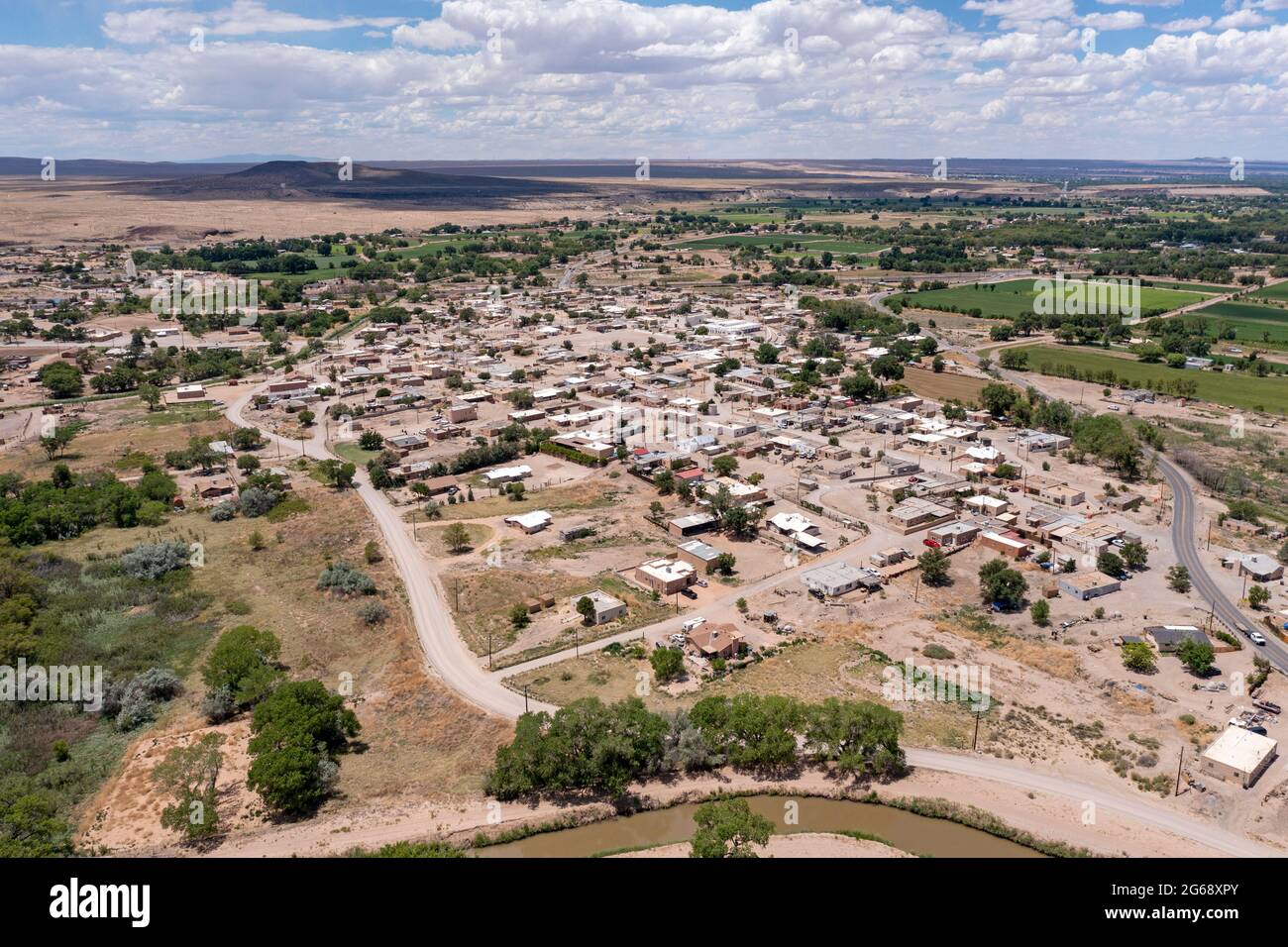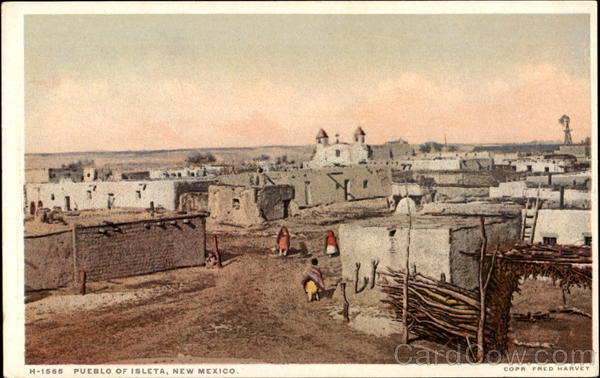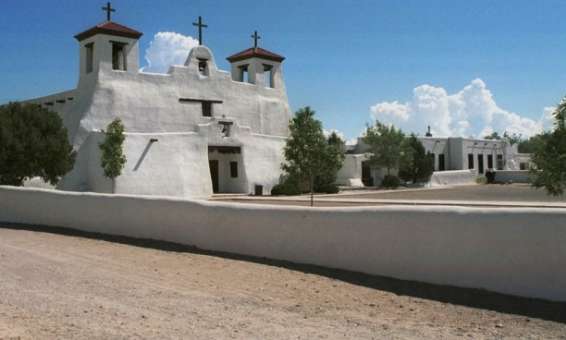
Isleta Pueblo: An Enduring Legacy on the Rio Grande
South of Albuquerque, where the Rio Grande carves its ancient path through the New Mexico landscape, lies a place of profound history and resilient spirit: Isleta Pueblo. For centuries, this community, whose name means "little island" in Spanish – a nod to a time when the river’s meandering course encircled their ancestral lands – has stood as a beacon of Tiwa culture, quietly asserting its identity amidst the currents of time and change. To step onto Isleta land is to enter a living chronicle, a testament to endurance, innovation, and an unwavering connection to the earth and its traditions.
The history of Isleta Pueblo stretches back millennia, long before the arrival of European explorers. Archaeological evidence suggests continuous habitation for over 1,000 years, making it one of the oldest continuously occupied communities in North America. The Tiwa people, original inhabitants of the region, thrived here, cultivating the fertile floodplains of the Rio Grande, their lives intricately woven with the rhythms of the seasons and the sacredness of the land. Their traditional knowledge, passed down through generations, encompasses sophisticated irrigation techniques, agricultural practices, and a deep understanding of the natural world.
The first significant encounter with the outside world came with the Spanish conquistadors in the late 16th century. Isleta, like other Pueblos, was subjected to colonization, attempts at forced conversion, and the imposition of foreign governance. The iconic San Agustín de Isleta Mission Church, one of the oldest churches in the United States, stands as a powerful symbol of this era, its adobe walls having witnessed centuries of both devotion and defiance. Yet, even under Spanish rule, the people of Isleta maintained a fierce grip on their indigenous beliefs and practices, often blending them with the new faith in a unique syncretic expression.
The Pueblo Revolt of 1680, a watershed moment in Native American history, saw the united Pueblos rise up against Spanish oppression. Isleta’s role in this monumental event was complex. While many Isletans participated in the revolt, a significant number, including those who had been displaced, were later taken south by the retreating Spanish, eventually forming the community of Ysleta del Sur Pueblo near El Paso, Texas. This division speaks to the profound disruptions of colonization but also to the adaptability and enduring spirit of the Tiwa people, who, even in diaspora, recreated their communities and kept their traditions alive. The main Isleta Pueblo was re-established after the Spanish reconquest, and its people continued to rebuild and thrive.
Today, Isleta Pueblo is a vibrant, self-governing nation, home to approximately 4,000 enrolled members. Its governance is a blend of ancient tradition and modern democracy, led by a Tribal Council and a Governor, who are responsible for the welfare and future of the community. "Our ancestors walked this land for millennia," states Governor Max Zuni in a recent address, his voice imbued with the weight of generations. "Their footsteps are our foundation. Our duty is to ensure the path remains clear for those yet to come, to preserve our language, our culture, and our sovereignty."

The heart of Isleta Pueblo beats strongly in its cultural practices. The Tiwa language, though facing the challenges of modernization, is actively promoted through educational programs and community initiatives. Elders play a crucial role, serving as living libraries of knowledge, sharing stories, songs, and traditions with younger generations. Ceremonies and dances, often held in the kivas – sacred, subterranean chambers – are not mere performances but profound spiritual events that connect the people to their ancestors, their land, and the spiritual forces that guide their lives. These events, while largely private and sacred, are the pulse of the community, reinforcing communal bonds and cultural identity.
Artistry is another cornerstone of Isleta culture. The Pueblo is particularly known for its distinctive pottery, characterized by a white or cream slip base adorned with striking red and black designs. These intricate patterns often reflect natural elements – birds, clouds, plants – and geometric motifs, each carrying symbolic meaning. Beyond pottery, basketry, weaving, and jewelry making continue to be practiced, not just as economic ventures but as vital expressions of cultural heritage, each piece telling a story of the maker and their connection to the Pueblo’s artistic legacy.
The land itself remains central to Isleta identity. The Rio Grande, once a barrier that created the "little island," is now the lifeblood of their agricultural endeavors. Traditional crops like corn, beans, and squash are still cultivated, alongside alfalfa and other cash crops. The Pueblo faces ongoing challenges related to water rights – a critical issue in the arid Southwest – and the careful management of their natural resources. Their stewardship of the land is a model of sustainability, driven by a philosophy that views the earth not as a commodity but as a sacred relative to be honored and protected for future generations.
In recent decades, Isleta Pueblo has strategically embraced economic development to ensure its self-sufficiency and fund vital community programs. The Isleta Resort & Casino, a major employer and revenue generator, is a prominent example of this modern enterprise. It features a hotel, a bustling gaming floor, diverse dining options, and a concert venue, attracting visitors from across the region. Adjacent to the resort is the Isleta Eagle Golf Course, an award-winning championship course that showcases the stunning New Mexico landscape. These ventures represent a careful balancing act, generating resources that are reinvested into education, healthcare, infrastructure, and cultural preservation efforts.
"We embrace progress, but not at the expense of who we are," explains a tribal elder, observing the modern casino complex from the quietude of the older village. "The casino funds programs that keep our language alive, support our elders, and ensure our children understand their heritage. It’s about building a strong future on the foundation of our past." This pragmatic approach allows Isleta to navigate the complexities of the 21st century while remaining anchored to its deep roots.
Education is paramount for the future of Isleta Pueblo. The tribal government invests heavily in schools, scholarships, and cultural programs aimed at empowering its youth. Efforts to teach the Tiwa language in schools, alongside English, are crucial in ensuring its continuity. Health and wellness initiatives, ranging from modern medical facilities to traditional healing practices, also reflect the holistic approach to community well-being.
Despite the triumphs, challenges persist. Like many indigenous communities, Isleta grapples with issues such as economic diversification beyond gaming, addressing health disparities, and protecting its land and water rights in an increasingly competitive environment. The delicate balance between preserving ancient traditions and adapting to a rapidly changing world is a constant negotiation. Yet, through it all, the spirit of Isleta Pueblo remains unbroken.
As the sun sets over the Rio Grande, casting long shadows across the ancient adobe walls of the mission church and the modern facade of the casino, Isleta Pueblo stands as a powerful symbol of resilience. It is a place where the echoes of ancestral drums mingle with the hum of contemporary life, where a deep reverence for the past informs a vibrant vision for the future. Isleta is not merely a historical site or a tourist destination; it is a living, breathing community, an enduring island of culture and sovereignty, charting its own course on the ever-flowing river of time, forever connected to its land, its language, and its people.


